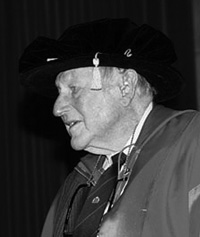The medical community lost one of its most passionate, innovative and hardworking members with the recent death of Ralph Reader. He changed the way Australians thought about cardiovascular disease, raising awareness of risk factors and promoting policies to counter the disease. He also championed cardiovascular research, being one of the key drivers of National Health and Medical Research Council (NHMRC) policies and decisions during the 1960s and 1970s.

Ralph died in Canberra on 13 January 2008. He is survived by his children Brian, Carolyn and Jeremy.
- Warwick P Anderson
- John S Horvath
- Phil Mayne
Correspondence:
Online responses are no longer available. Please refer to our instructions for authors page for more information.




